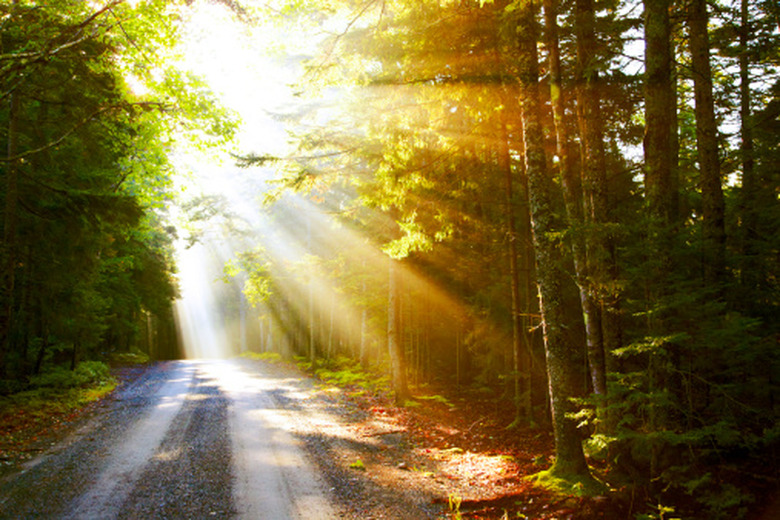Renewable & Nonrenewable Resources For Kids
Everything needs energy–whether it is a school bus taking kids to and from school, the school building that heats or cools the classrooms, or even the cell phones that many children use to keep in touch with each other and their parents. Broadly speaking, energy sources can be grouped into two categories: renewable and nonrenewable. Kids can use several resources available on the Internet, many provided by the federal government, to find out more about the two energy sources.
Energy Kids
Energy Kids
Energy Kids is a website set up by the U.S. Energy Information Administration: By using this resource, kids can learn that 92 percent of the energy consumed in the U.S. comes from nonrenewable energy sources: uranium ore and the fossil fuel such as coal, natural gas and petroleum. The most widely used renewable energy sources include biomass, geothermal power and hydropower, and solar and wind power. In addition to explaining each source of energy in detail, Energy Kids provides information on electricity, history of energy, how energy is used and how it can be saved. The resource also offers games and activities.
Alliant Energy Kids
Alliant Energy Kids
Alliant Energy Kids is sponsored by Alliant Energy, a power utility company. The resource provides an explanation of what renewable energy is and describes different renewable energy sources. It also provides some fun facts about renewable energy. For example, in 200 B.C., people in China and the Middle East used windmills to pump water and grind grain. Also, one wind turbine produces enough electricity to power up to 300 homes.
Kids: Saving Energy
Kids: Saving Energy
Kids: Saving Energy, an online resources provided by the U.S. Department of Energy, offers information about renewable energy In addition it also offers sections such as Games and My Energy Smart Home. My Energy Smart Home includes tips for kids to save energy in their homes by turning off the lights, using energy-saving light-bulbs, shutting off computers, using natural light, heat and cooling and unplugging the phone charger when not in use.
Energy Star Kids
Energy Star Kids
If you have purchased any home appliances in the 2000s, you may be familiar with the Energy Star label, which means that the product complies with the Energy Star program, administered jointly by the U.S. Environmental Protection Agency and the U.S. Department of Energy. Energy Star Kids is a website sponsored by the Energy Star program. It teaches kids, in a very interactive fashion, about where energy comes from, what types of energy humans have harnessed–renewable and nonrenewable–and how to save energy.
Cite This Article
MLA
London, John. "Renewable & Nonrenewable Resources For Kids" sciencing.com, https://www.sciencing.com/renewable-nonrenewable-resources-kids-7930947/. 24 April 2017.
APA
London, John. (2017, April 24). Renewable & Nonrenewable Resources For Kids. sciencing.com. Retrieved from https://www.sciencing.com/renewable-nonrenewable-resources-kids-7930947/
Chicago
London, John. Renewable & Nonrenewable Resources For Kids last modified March 24, 2022. https://www.sciencing.com/renewable-nonrenewable-resources-kids-7930947/
